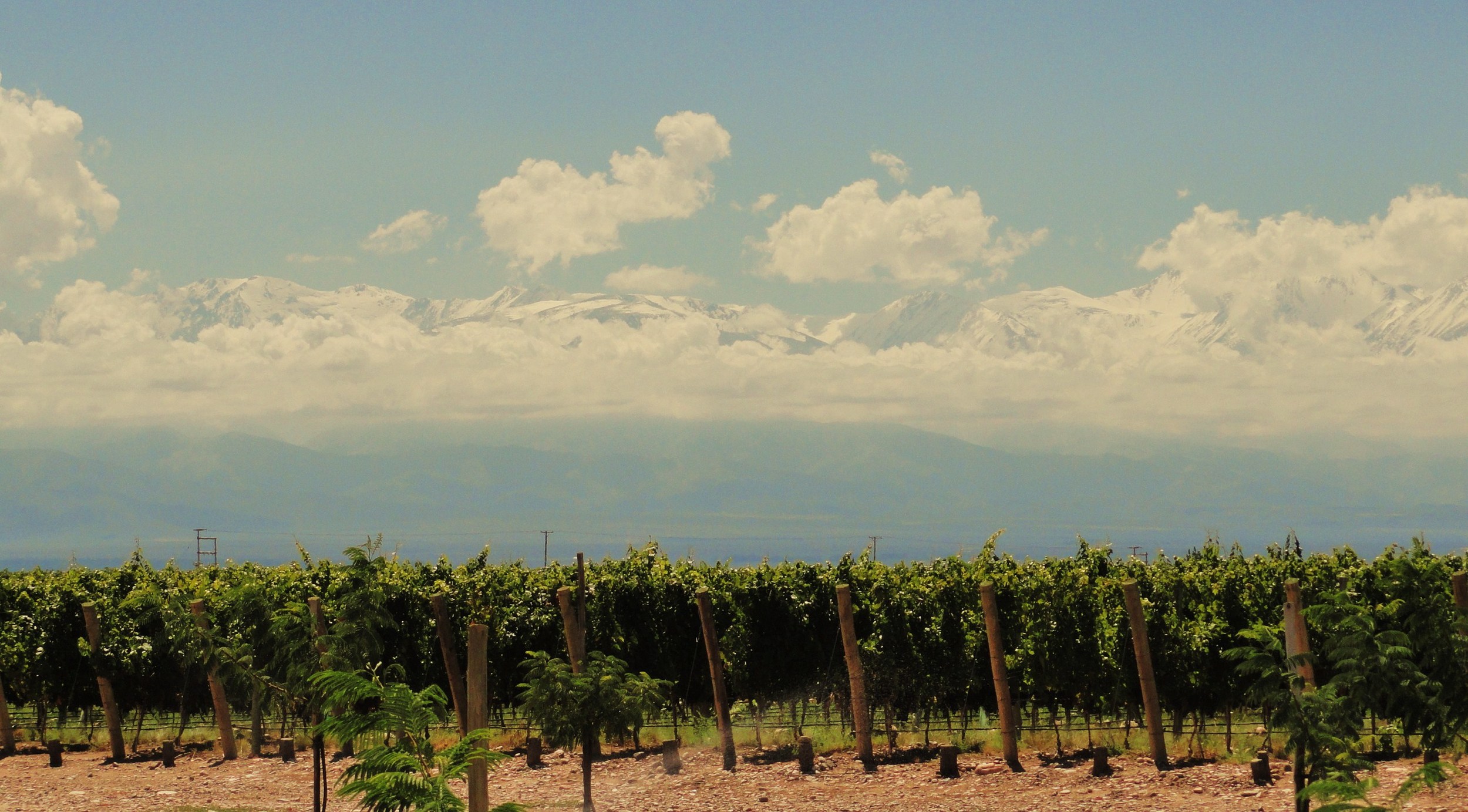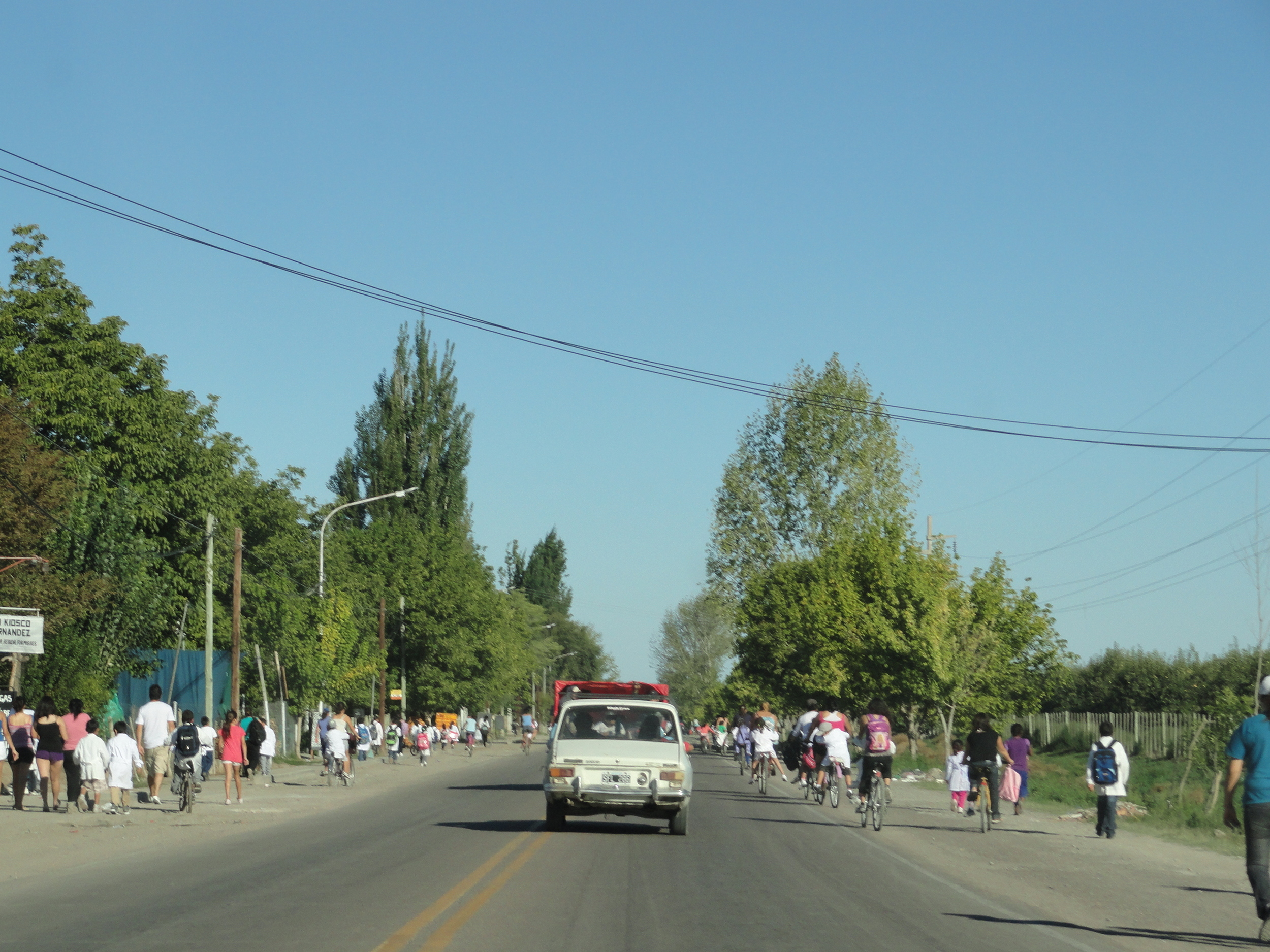Definitive Guide to Wine Tasting in Mendoza
It felt so nice to finally get back to wine country: Sprawling vineyards, extensive wine lists, farm-fresh food and best of all, wine tasting. We noticed real quick though that we weren't in California anymore, and wine tourism here is a faint glimmer on the horizon. 
Visiting the bodegas for tastings in Mendoza is an adventure in itself, and the majority of wineries are far from the city center where most people stay. Downtown Mendoza, while close to many cafes, bars and hot restaurants is about 30 minutes from Maipu, 40 minutes to 1 hour from Lujan de Cuyo and a whopping 1 hour 45 minutes from the Valle de Uco.
We did a lot of research before we got here, but after talking with friends in the industry and experiencing the area first hand, we've figured out what to do, what not to do, and how to get the most out of this wild-west of wine regions.
Transportation: The most difficult part of wine tasting in Mendoza is getting to the wineries. Contrary to some articles, hiring a driver IS NOT the only, or even the best way to get around Mendoza's wine regions. There are plenty of transportation options to suit every travelers needs and expectations.
- Private Driver: :(
Pros: Convenient, private, you can go at your own pace and you don't have to navigate the impossible, unmarked dirt roads on your own. Guests can set their own itinerary, then relax and enjoy the luxury of a professional taking the wheel.
Cons: Expensive, and many drivers are not thoughtful about where they take their guests. They often take tourists to places where they can get free tastings, which are not necessarily the best bodegas or the best wines. This can be disappointing for people wanting to taste premium wines, since those aren't offered in the free tastings.
Drivers often do not make appointments either, which is absolutely necessary in Mendoza. This can either lead to being turned away altogether, or stuffed into an overcrowded tour or tasting.
Drivers also drive (Duh!), which means they are less likely to explain the history, the different bodegas, etiquette, winemaking techniques, producers, etc. To us, this is key to getting the most out of a wine tasting.
- Guided wine tours: :)
Pros: Thoughtfully planned and guided trips through each region, led by a knowledgable, bilingual guide. The best tour companies max out at 8 people, so it's an intimate shared experience and not a giant cattle herd.
The companies choose a diverse group of wineries to visit, so visitors can see different styles of Mendoza wine, they arrange the appointments, typically have special treatment set up for their guests at every bodega, and the guides are fun, and informative. We learned about different winemaking techniques, history, climate differences, wine country gossip, restaurants and everything Mendocino.
Hands down the best company for this is Mendoza Wine Camp; they offer an unparrelled immersion into Mendoza wine, culture and food. The owners, Adam and Myfanwy, lead the tours themselves and started this company after being top-guides for the two best companies in Mendoza.
This is our preferred method of transport since it's educational and arranged by people who know and respect not just the wineries, but the money and time of their guests.
Cons: Guided tours are also expensive. Th pre-planned and confirmed itinerary means no last-minute itinerary changes. Smaller groups may be combined with other groups to fill out the tour, so normally the tour is not completely private. Typically these are interactive and educational, so for those wanting to kick back and just taste wine, this may not be the best route.
- Renting a car: :( or :) Depends on your driving and navigation skills
Pros: Cheapest way to go, especially if travelling with a group and the cost of the car can be split. Complete control of where to go, what to do and when to do it. Driving in Argentina is an experience in itself and you feel a little more like a local. It can be fun and quite an adventure if you like to drive and have good sense of direction. It's a personal place to keep your stuff while out and about.
Cons: Freaking crazy! Drivers in Argentina are looking out for numero uno, and don't really care about numeros dos, or tres, so beware! Navigating the primitive back roads can be extremely frustrating and you WILL be at least an hour late to one, if not all appointments. Many wineries aren't marked, so unless you know what you're looking for, it can seem impossible to get where you need to go.
Oh, and the rental companies (we used Hertz), require renters to return vehicles full of gas. Normally not a big deal, but in Mendoza, gas stations run out of gas regularly, which makes this mundane task a headache and a half!
- Bike: :( on your own :) with a tour company
The only region close enough to even think of biking to and through is Maipú and a few guidebooks recommended this option. To my surprise and dismay, this is not really an option at all.
I thought we could rent a bike from downtown Mendoza, ride into Maipú and pedal through the wineries. Sounds fun right? Not according to the bike companies; all three places I asked actually laughed at me and explained that they not allow renters to take bikes to Maipú, and if we tried we'd probably be run over en route.
Apparently Maipú is not accessible enough to bike there on your own, but there are companies, like Uncorking Argentina, that arrange personalized bike tours with transit to and from the wine regions. Once there, bikers can safely pedal all they want through the wineries.
- Only Visit 3-4 Places per day Max
In Napa, tasters can hit 3-4 wineries before lunch; that is not the case here. Not only are the wineries are very far from eachother, but most bodegas don't even do the whole stand alone tasting thing. Literally every place we scheduled 'tastings' at included a tour, sit-down tasting, history and even some snacks.
It's definitely not a 'get 'em in, get 'em out' mentality and the staff takes great pride in presenting their wines and story to visitors, so plan on at least 90 minutes to 2 hours per bodega.
- Bring Plenty of Cash (Effectivo in Español)
Not only will youprobably get a discount for paying in cash, but most bodegas simply DO NOT accept credit or debit cards at all. This is especially true with the smaller, more boutique-style places, but a lot of larger bodegas, restaurants, bars and shops don't accept cards either. I'd say this is pretty much standard everywhere outside of Buenos Aires, so take note.
This isn't as sketchy as it may appear and the whole country manages to function this way. The reasoning behind this seemingly primitive way of doing business has to do with taxes and the economy. The government taxes businesses out the wa-zoo on their declared income, so most places prefer to deal in cash where they have more discretion come tax time. Also, Argentina's fickle economy has obliterated it's citizens faith in banks, and a lot of people have stopped using them entirely.
Tipping: This is always a tricky subject, especially in a foreign country. Tips are definitely accepted here, but it's not always expected and the percentages vary.
- Winery staff
Not necessary. When we asked, the woman in the tasting room seemed more confused than anything and proceeded to tell us about tipping at restaurants.
- Servers at restaurants
10% is good. Like anywhere else, less if the service is bad and more if its extraordinary, but 10% is the norm. Argentines often do not tip much at all, but we feel, as do the servers, that it is common courtesy just like in the States.
- Wine guides
10% of the cost per person. For example, if you paid $100 US per person, then tip would be $10 US per person tip, not $10AR. Same guidelines apply as with restaurants for poor or extraordinary service.
- Taxis
Not necessary. Typically we just let them keep any change and that was appreciated.
Scheduling a Tasting: Contrary to the US where wineries encourage the walk-in taster, Mendoza rarely does. At all. You must, must, must make appointments!
There are guards and gates at almost every winery entrance and they always ask whether you're on the reservation list. Most wineries have websites and published telephone numbers for reservations, but count on a few unreturned emails and invalid numbers. This can be frustrating, but that's just how it works here, so I say keep trying!
During off-season or the weekdays, if you ask nicely, most places will let you in without a reso if they have room. Understand if they don't though and move on; I mean we're pretty darn cute and we even got denied a couple of times!
Food: Once outside the city center, there are very few restaurants, cafes or bars. Some wineries have restaurants, but often they're small, expensive and fully booked with reservations.
One option is to bring snacks, which we did a lot: fruit, nuts, bread, olives, salami, cheese, etc. A mixture of protein and carbs is best to absorb all that alcohol and keep the wine-headache at bay
There is one stand-alone restaurant worth mentioning called La Barrica. It's a local spot in Lujan de Cuyo, along Acceso Sur, and is literally at a gas station. It's gas station gourmet at it's finest though: the tables are clothed with black table cloths, the waiters wear aprons and white button down shirts, crystal glasses are set and polished, and seasonally inspired, gourmet dishes pack the menu.
It is fantastic and cheap and you'd never know you're just 30 feet from a YPF (Argentine gas station). I recommend the salmon and the rabbit...both were delish!




